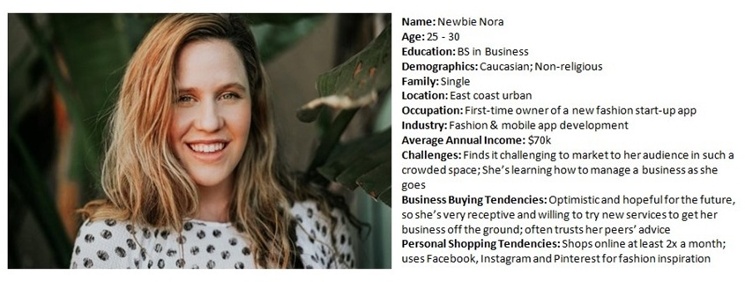Joining a character on an immersive quest to overcome a great evil or unearth a long-sought treasure is an experience that has held sway over humankind for thousands of years, with the roots of storytelling tracing back to cave paintings created circa 15,000 B.C.
And while things may have changed a bit since then, the love for a good story remains just as intrinsic to the human psyche – which is why, today, businesses around the world can still rely on solid storytelling in marketing to help fuel their success.
But there’s a slight catch: writing an interesting story isn’t enough to help your brand stick out. It’s just as critical to write stories that resonate with a precise audience. Here, we’ll delve into the process of tailoring your stories to suit the needs of your customers, along with why doing so is so important.
All Great Content Starts With Research
In-depth audience research should take place long before you ever begin writing your first piece of digital content. The customer profiles created as a result of this research – known as buyer personas – don’t just guide your brand’s storytelling; they serve as the foundation of your company’s marketing efforts.
The best buyer personas will supplement your marketing tactics by painting a crystal-clear portrait of the audience you’re targeting. These profiles go beyond standard identifiers, like age, education, career and location and dig deeper into what drives, challenges and affects your customers on an everyday basis. Additionally, they often include direct quotes and other forms of open-ended feedback from real-life people that are part of your audience, which helps lend the persona further color.
Here’s a sample we created for a previous blog post on buyer personas:

There’s no denying it: collecting all of this data is time consuming. It requires lots of intricate research, which can take place through the collection of data through online forms, surveys or even in-person interviews. But ultimately, opening such an intimate window into the lives of your audience allows you to see exactly how your customers work, making it that much easier to tackle specific pain points as you create content.
Finished Your Research? Here’s How Your Buyer Personas Should Factor Into Your Blog Strategy
Now that you’ve developed intricate profiles of your key customers, your stories should leave no room for your audience to wonder why they should care. Instead, each piece of content should incorporate your research findings, so that every single detail, from the headline to the structure to the multimedia content incorporated into the post, works to rope the reader into wanting to know more, and eventually navigating to another part of your website.
Wondering how exactly to incorporate your buyer personas into your work? We’ll go over three essential tips for writing stories readers can relate to.
1. Discuss a challenge your targeted consumers actually face.
Many blossoming businesses find it difficult to shift the focus away from their own products. But the key to enticing your audience isn’t to talk about yourself, but to highlight the real-life issues your customers have to deal with, and then position your company as a viable solution. Just note that whether or not your story makes a hard sell depends on the stage of the buyer’s journey you’re targeting.
2. Tailor your tone and overall writing style to meet your customers’ expectations.
Writing a lighthearted piece riddled with hip slang is probably not the best way to address an audience of well-paid 50-somethings researching financial topics, just as jargon-heavy, technical content probably won’t strike a chord with a young audience looking for basic information on healthcare. Be sure to pay close attention to the language you use while you’re writing, as missing the mark can mean the difference between a successful story and a sky-high bounce rate.
Take the two screenshots below for example. The first showcases the introduction from a Neuroscience News article, and it deftly addresses its target audience with a tone that’s clearly formal, and yet accessible enough to remain comprehensible by a reader with an everyday interest in science.
The second, an introduction from a Field & Stream blog post, uses casual language and the first-person point of view, effortlessly immersing the reader in a situation with which they can likely relate.
Neuroscience News article using language that's formal, yet concise

Field & Stream blog using friendly, casual language

Though each topic is worlds away from the other, the precise tone struck by both authors represents a deep understanding of the content’s audience.
3. Adjust the little details to please your audience.
While you’re constructing your buyer personas, make sure to collect information on your audience’s content consumption habits. This makes it that much easier to determine which components are essential to a successful blog post without relying entirely on experimentation. For example, while one audience may prefer professionally structured, long-form content, others may prefer bite-size information delivered by way of a bulleted list.
Also consider the type of multimedia content incorporated into the piece. Certain groups might lean heavily toward static imagery, like infographics, where others gravitate toward supplementary videos.
Why Marketing Through Storytelling Requires Personalization For Success
When it comes down to it, personalization plays an essential role in helping your brand’s content stand out from the crowd. Today’s content marketing landscape is already massive, and it only continues to grow, which means your audience likely has plenty of competing business blogs to choose from. Stories that are geared for the wrong audience may still rack up views, but if they’re reaching the wrong set of eyes, these views will never lead to conversions – rending the time and money you spent on your content marketing campaign null and void. Tailoring great content to reach a rigorously defined audience, on the other hand, allows you to position your brand as a unique resource for that audience – one that they can’t find anywhere else.
Struggling to keep up with the demands of writing highly personalized content on a regular basis? Hire content writers from Virtucom Group. With our blogging packages, we’ll deliver high-quality digital content that’s written for you brand and designed to hit home with your target audience.
Other posts in this series:
Use The Right Characters To Jump-Start Your Content Development
The Best Content Writers Use This Secret Weapon To Engage Audiences






